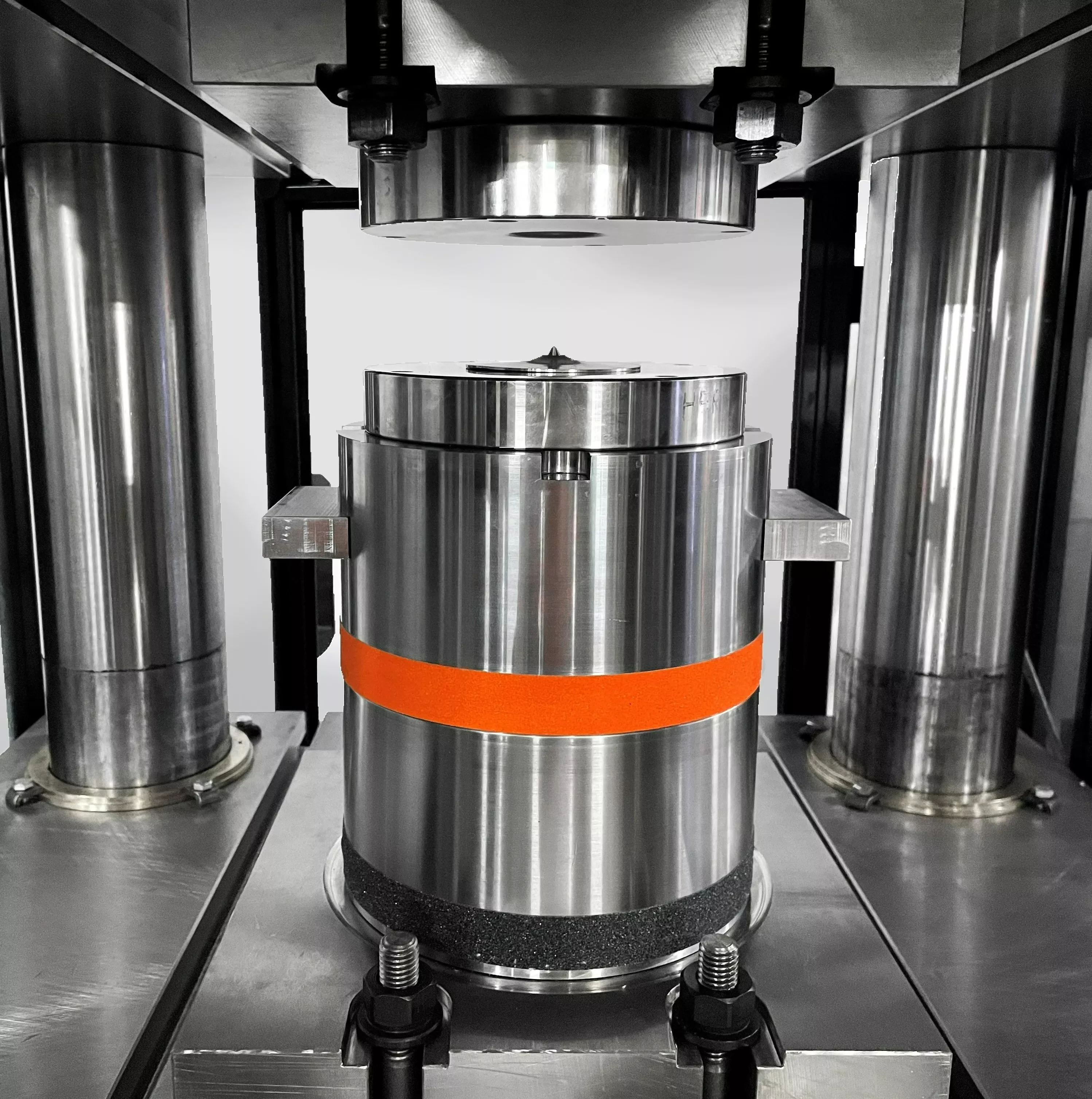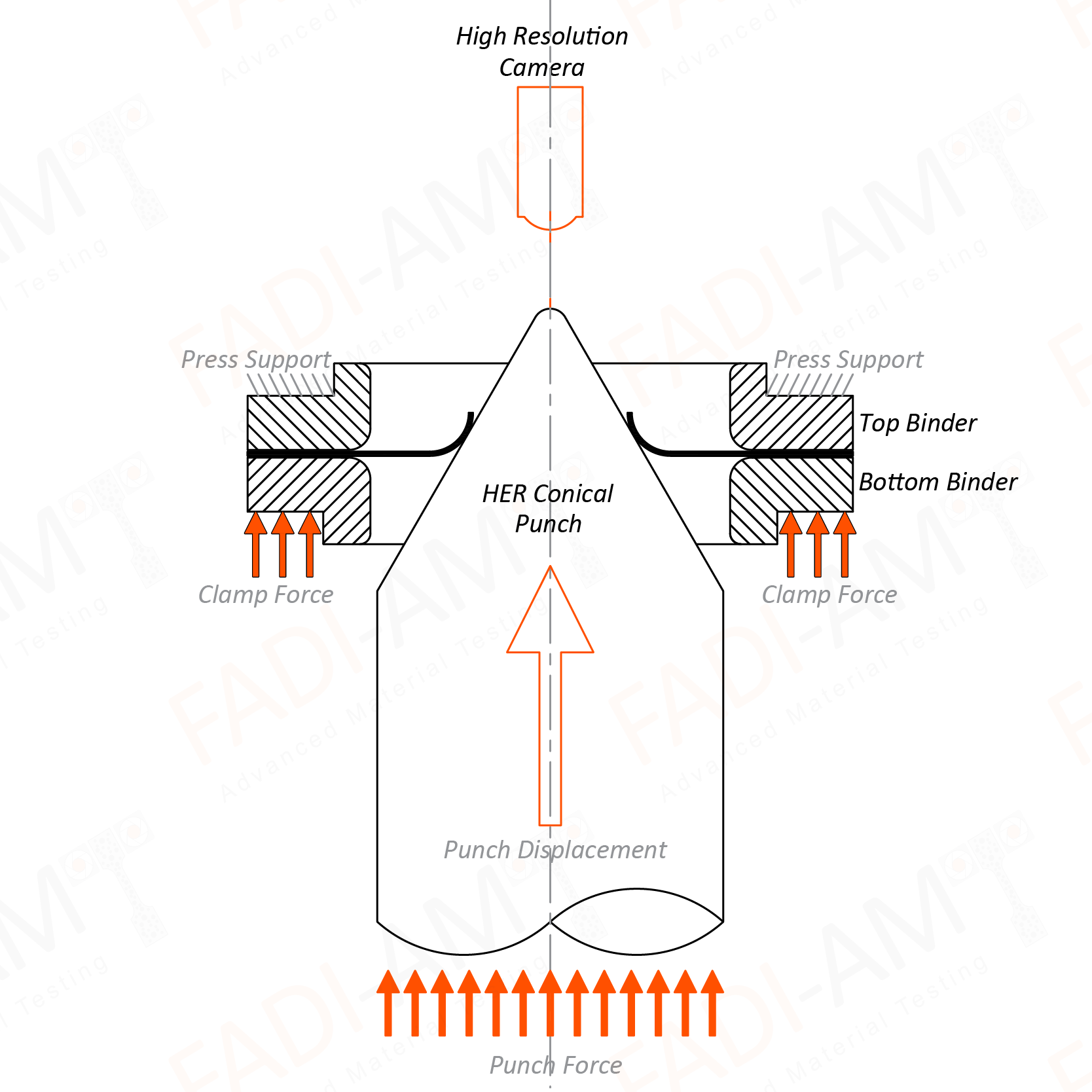Fundamentals of Hole Expansion Ratio (HER) Testing
 Testing_FADI-AMT.webp)
Engineering products often contain specially shaped steel sheet parts;
these parts are created using various forming processes such as
shearing, punching, and stamping. In order to develop the proper part
forming process, engineers must know how the material behaves under
the anticipated forming conditions. These aspects of material behavior
are called formability, and a wide variety of tests have been created
to assess formability. One such test is the Hole Expansion Ratio (HER)
test, and it is focused on a particular aspect of formability that is
specific to edge failure. This article will cover the basics of HER
testing, including theory, equipment, methods, results, and testing
standards.
Relevance: Why Hole Expansion Ratio Testing?
One of the most common stresses associated with sheet metal forming
is edge stretching. When metal parts are punched and then stamped,
the edges must stretch to accommodate the change in shape being
forced by the forming equipment. Stretching the edges of a sheet
metal part too much can lead to highly undesirable results like
cracking, potentially ruining the part. Therefore, manufacturers
require good predictions for when cracking will begin under certain
types of edge stretching. These predictions can come from
theoretical models, but testing is also a crucial component. The
Hole Expansion Ratio (HER) test is designed to show the cracking
behavior for a metallic sheet with a circular hole under uniform
stretching. This forming scenario is especially relevant in the
“automotive industry”, where many parts are manufactured using
stamping that follows hole punching.

Courtesy of Azuko Technical Instinute
HER Testing Equipment
Like other sheet metal tests, such as Biaxial Tension Testing and
FLC Testing, the HER test requires two fundamental forces: clamp
and punch forces. Any test machine capable of producing these two
forces independently can be used; that being said, HER testing
does not require large forces. A Universal Formability Tester
(UFT), a compact and self-contained piece of equipment driven by
hydraulic cylinders that control the clamp and the punch forces,
is typically used for HER testing. A dual-acting hydraulic press
can also be used, but hydraulic presses are typically larger and
more powerful machines than are required for HER testing. An
electromechanical load frame equipped with independent hydraulic
clamping system can be also used for this testing.
The only sensor necessary for HER testing is simply the means to
monitor the test sample for cracking. This is most often done with
one high resolution camera mounted atop the testing machine and
facing downwards toward the deforming sample. During the test, the
camera gives the testing engineer a real-time view of sample
deformation, enabling the test to be terminated when cracking
begins. Measuring forces or movement during HER testing is not
required.

HER Testing Setup at FADI-AMT
HER Test Sample Geometry
The sample geometry for the HER test is very straightforward, but
the specifics of sample preparation can have large effects on
testing results. Each HER sample is simply a square blank, ~90 to
100mm in size, with a small hole (10mm in diameter) introduced
close to the center of the blank. To mimic actual sheet metal
forming processes, the hole is typically formed by punching. One
of the most important factors determining the outcome of an HER
test is the quality of hole punching.
This is because the punching process induces work hardening in the
edge region around the hole. It is therefore important to monitor
and maintain the condition of the punching tools. Moreover, the
amount of work hardening and damage to the punched material within
the edge region is affected by the punching die clearance; this is
why die clearance is specified in HER testing standards and it is
typically set to ~12% of the sheet metal thickness. Standards
attempt to limit variability in sample preparation and thus
produce more consistent HER testing results.

HER Test Sample Geometry_FADI-AMT
Though not specified in the Standards, the amount of time between
sample preparation (punching) and HER testing can also significantly
affect the results. Because of this, many manufacturers specify an
acceptable hold time between punching and testing to improve
consistency.
HER Testing Method
Regardless of the testing machine used, the principle of testing
is straightforward. Each punched sample is placed in the testing
machine and centered with respect to the conical punch.
The clamping plates simply hold the test sample firmly in place to
prevent slippage, while the conical punch is driven against the
hole deforming it into a crater.
Testing stops when a full crack propagates across the edge of the
deformed sample (the crater). The cracked sample is then measured
and the hole diameter at the point of cracking is recorded.

HER Test Results
The most important piece of data from the HER test is the Hole
Expansion Ratio; this number is simply the ratio of the final hole
diameter (right after a full crack is detected) to the initial hole
diameter (10mm). While each individual test produces an HER value,
the average of multiple tests is usually taken to increase accuracy.
The results of each hole expansion can vary widely, so it is
important to account for variability (more than 5 samples are
typically tested per material). An example of the HER values
extracted for a grade of steel that is commonly used in automotive
body structures is given in this summary table.

HER Testing at FADI-AMT
HER Testing Standards
HER testing is regulated primarily by the ISO 16630 testing
standard.


 Testing_FADI-AMT.webp)




